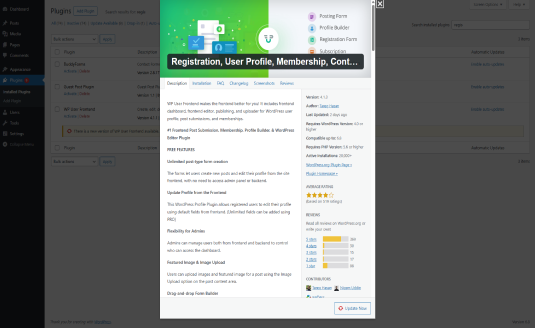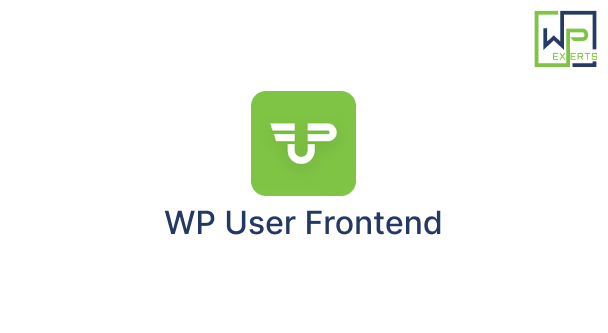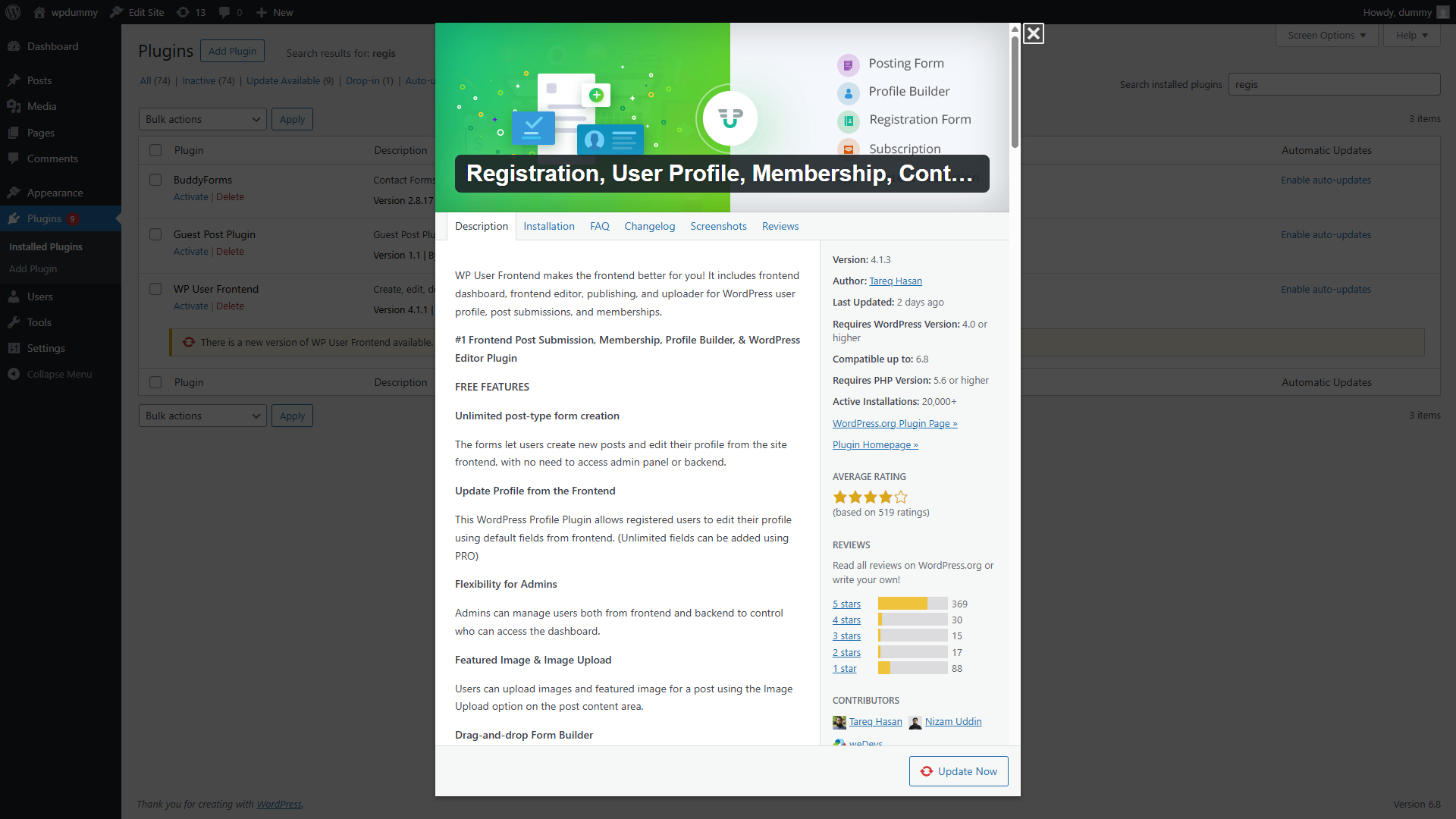WP User Frontend – A Complete Frontend User Management & Content Submission Plugin for WordPress
Managing user-generated content and allowing frontend interactions is critical for building interactive, user-centric websites. Whether you’re running a membership site, a job board, a directory, or a multi-author blog, offering users a seamless frontend experience can dramatically boost engagement.
The WP User Frontend plugin, developed by weDevs, is one of the most robust solutions to handle user registration, profile management, frontend content submission, membership, and content restriction—all from your site’s frontend, with no backend access needed.
This plugin eliminates the default WordPress backend interface for users, giving you full control over how users register, submit content, manage profiles, and access site features.

What is WP User Frontend?
WP User Frontend is a WordPress plugin that allows users to perform various actions on the frontend of your site—including:
- Registering accounts
- Logging in and editing profiles
- Submitting and editing posts
- Viewing user directories
- Gaining access through memberships
- Accessing restricted content
Its drag-and-drop form builder, role management tools, and payment integrations make it suitable for a wide range of applications—from blogs and membership portals to digital marketplaces.
Key Features Overview
1. Frontend Registration & Login
Create custom registration and login forms with support for custom fields, role selection, and redirection. Replace the default WordPress login and registration with branded, stylized frontend versions that match your theme.
2. Frontend Post Submission
Let users submit posts, pages, or custom post types (CPTs) from the frontend. Users can also:
- Edit or delete their submissions
- Upload images and files
- Select post categories and tags
- Preview content before publishing
This is ideal for multi-author blogs, classified sites, and job portals.
3. Custom User Profiles
Each registered user gets a public or private profile page. You can create a customizable user profile layout using the built-in builder:
- Display user meta fields (bio, social links, avatar)
- Show their submitted content
- Let users edit their details from the frontend
4. Membership and Subscription Packages
You can monetize your content using paid membership or subscription models:
- Offer free or paid user registration
- Create subscription packs limiting the number of submissions
- Set post expiration dates
- Integrate with payment gateways (PayPal, Stripe in Pro version)
Great for sites like marketplaces, job boards, and business directories.
5. Content Restriction
Control who sees what content using the content restriction feature. You can:
- Restrict pages/posts to logged-in users
- Allow content access by role or membership level
- Show custom messages to non-eligible users
It’s an essential tool for membership sites, online courses, or premium content areas.
6. User Directory
Display a list of registered users on the frontend with customizable templates. You can:
- Show user avatars, names, roles, and custom fields
- Add filters (e.g., by role, custom taxonomies)
- Link to user profile pages
Ideal for community portals, team directories, or talent databases.
7. Drag-and-Drop Form Builder
The intuitive drag-and-drop form builder allows you to create:
- Registration forms
- Profile forms
- Post submission forms
You can add custom fields like:
- Text, dropdowns, checkboxes, file uploads
- Date pickers, password fields, repeatable sections
No coding is required—design forms that match your exact data needs.
8. WooCommerce Integration (Pro)
WP User Frontend integrates with WooCommerce to:
- Display frontend dashboards for customers
- Let vendors or users submit products
- Assign products to specific sellers
Useful for multi-vendor marketplaces or subscription-based stores.
9. User Role Management
Assign different capabilities based on user roles:
- Limit post submissions by role
- Control form access per role
- Redirect users based on roles after login or registration
This gives you total control over your site’s user hierarchy and functionality.
10. Email Notifications
Trigger email notifications to:
- Admins (for new submissions or registrations)
- Users (post approval, rejection, registration confirmation)
You can customize the templates and add dynamic tags to personalize communication.
Use Cases
1. Multi-Author Blog or Magazine
Allow contributors to submit blog posts, edit content, and manage profiles without accessing the backend. Use submission limits and editorial approval workflows to maintain quality control.
2. Membership Website
Create subscription tiers with different levels of access and privileges. Restrict content based on role or plan and monetize access with payment integrations.
3. Job Board or Classified Site
Let users register, create listings, and edit them later. Charge per listing or offer subscription packages. Display a public directory of employers or sellers.
4. Educational Portal
Use frontend submission and content restriction to manage course submissions, student registrations, and protected course content.
5. Directory or Listing Site
Enable businesses or professionals to submit their profiles, manage listings, and appear in a user directory visible to the public.
Benefits of WP User Frontend
1. No Backend Access for Users
Improve security and user experience by keeping visitors out of the admin dashboard. Everything happens on the frontend.
2. Customizable and Developer-Friendly
Add custom fields, shortcodes, and hooks to integrate with third-party tools or extend functionality. Great for developers building custom applications.
3. Scalable
Supports large user bases with performance optimizations and caching compatibility. It’s suitable for both small and large-scale sites.
4. Mobile-Responsive Design
All frontend forms and profile pages are responsive and compatible with modern WordPress themes.
5. Time-Saving
Eliminates the need for multiple plugins—registration, profiles, content submission, restrictions, and membership are all built-in.
Installation and Setup
Step 1: Install the Plugin
- From WordPress dashboard, go to Plugins > Add New
- Search for “WP User Frontend”
- Click Install Now and Activate
Step 2: Create a Form
- Go to WP User Frontend > Post Forms or Registration Forms
- Use the drag-and-drop builder to design your form
- Configure post type, default status, redirection, etc.
Step 3: Add the Form to a Page
- Use the shortcode provided (e.g.,
[wpuf_form id="123"]) to embed the form on any page or post
Step 4: Customize Settings
- Set user role access
- Enable/disable email notifications
- Configure content restriction and redirection options
Step 5: (Optional) Upgrade to Pro
For features like payment integration, user directory, conditional logic, WooCommerce, and more, consider upgrading to the Pro version.
Security Considerations
- Use reCAPTCHA on registration and submission forms to prevent spam.
- Review submitted posts before publishing to prevent abuse.
- Limit file types and sizes for uploads.
- Assign proper user roles to avoid over-permission.
WP User Frontend Pro Features
- Payment gateway integration (Stripe, PayPal)
- Conditional logic for forms
- Email verification for new users
- Profile completeness indicators
- Advanced user directory filters
- Role-based dashboard customization
- WooCommerce product submission
- Custom redirect after login/logout/registration
Conclusion
The WP User Frontend plugin is a powerful and flexible solution for any WordPress site that requires frontend interaction. Whether you’re building a community, directory, or membership platform, WP User Frontend provides all the tools to manage users, submissions, and content access—without letting users into the backend.
Its features like custom registration, profile management, subscription-based access, and content submission make it an excellent choice for websites that want to enable user participation while maintaining control and design consistency.
With both free and premium tiers, WP User Frontend can grow alongside your project, providing both beginner-friendly and developer-ready capabilities.





